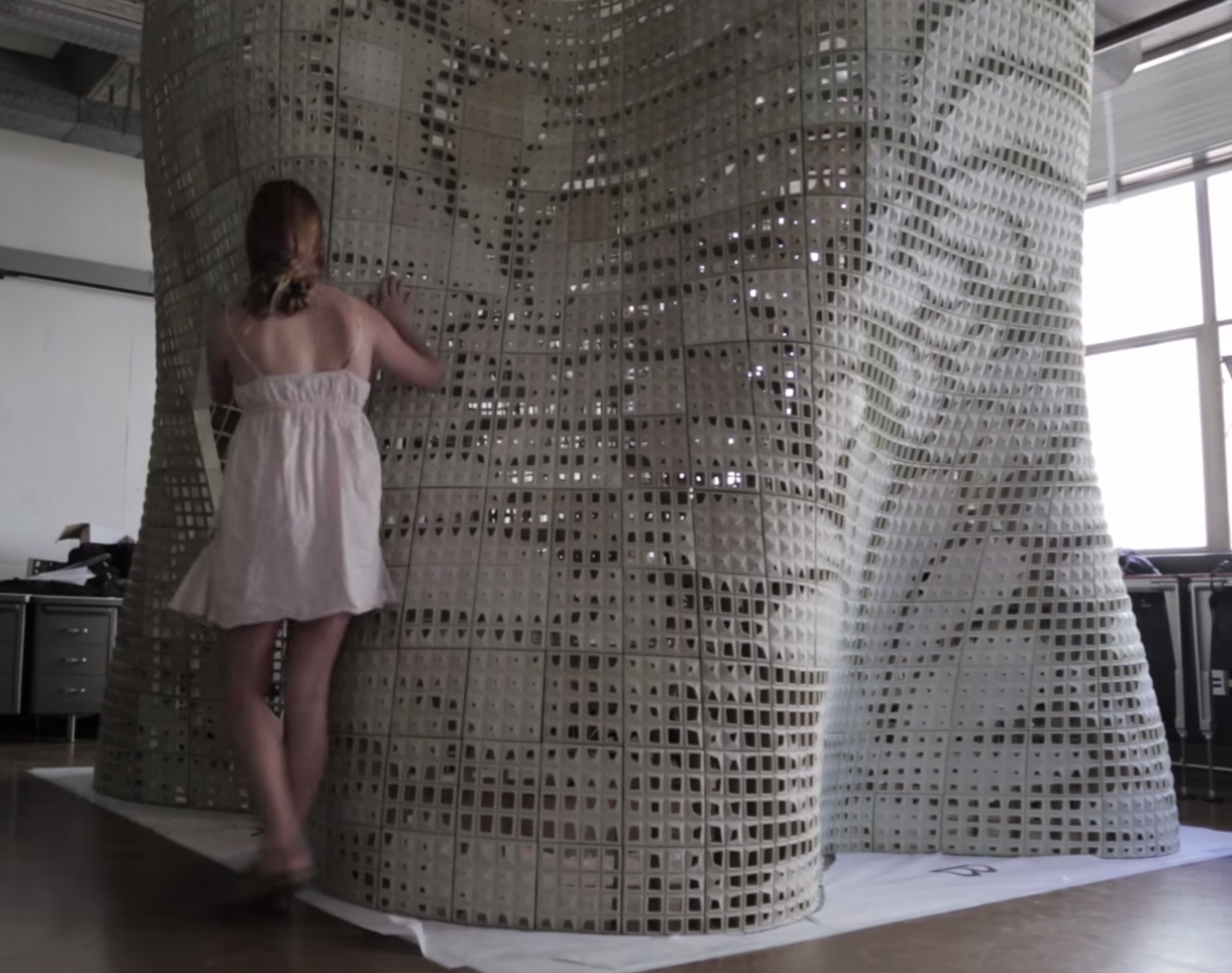
3D Systems teamed with a team from UC Berkeley to 3D print an intricate architectural structure, perhaps the largest cement structure ever 3D printed.
The work, entitled “Bloom”, is a colorful wavy mesh designed specifically to provide interesting lighting effects, is tremendously large as 3D printing goes: 12 x 12 x 9 feet (3.7 x 3.7 x 2.3m). However, Bloom was not printed in one step by a gigantic 3D printer.
No, instead the process involved 3D printing some 840 individually designed parts on an 11-system array of 3D Systems’ ProJet x60 color 3D printers. These parts were then carefully assembled into the final structure by the team from UC Berkeley.

The UC Berkeley team was led by Associate Professor of Architecture, Ronald Rael. Not only did Rael’s team design the complex geometry of Bloom, they also created a new cement-polymer mix that was used in the X60’s to print each piece. We’re quite impressed – as you can see in this video, the pieces are being bolted together, something you must have rather strong parts to do. Evidently the new cement-polymer mix was up to the job.
This experiment seems to demonstrate the potential of the “building factory” approach, where building structures are created at a central 3D printing factory and then shipped to the site for final assembly. Previously, we’d seen this approach used but only for simplistic building components that clearly did not leverage the advantages of 3D printing. Rael’s project clearly does.
Via UC Berkeley and 3D Systems

